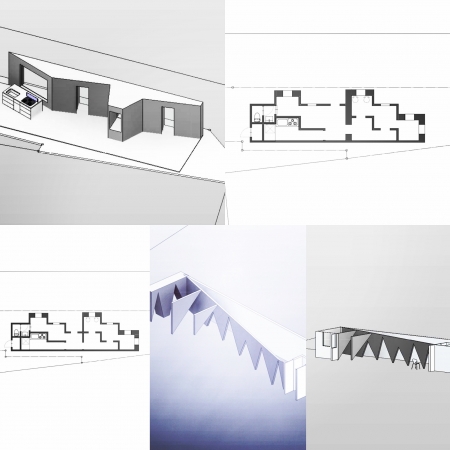壁の厚さ再考
誰も疑問に思わないこと、例えば、壁の厚さは部材の厚さで決まっている。部材の厚さに関連することは、見た目の仕上げの意匠や構造、設備の配管、断熱であるが、壁が厚くなる程、その分実際に使える空間が狭くなるので、壁はなるべく薄くしたいという前提がある。
極限まで壁を薄くする手法は今までも見られた。例えば、鉄板で壁をつくり、設備の配管は露出にし、断熱は壁に断熱塗料を塗り、もちろん構造は壁を鉄板にすることで担保されるので、壁の厚みは構造上の耐力で決まる。見た目の仕上げの意匠は鉄板の質感で十分である。
壁の厚さが部材の厚さで決らない場合があるだろうかと考えた。その場合は壁の厚さ自体に意匠上重要な意味がある場合であり、壁の厚さがデザイン要素となる場合である。
"Rethinking wall thickness"
No one wonders, for example, the thickness of the wall is determined by the thickness of the member. The things related to the thickness of the members are the design and structure of the appearance, the piping of the equipment, and the heat insulation, but the thicker the wall, the smaller the space that can actually be used, so the wall should be as thin as possible. There is a premise.
Techniques for thinning walls to the utmost have been seen. For example, the thickness of the wall is determined by the structural strength because the wall is made of iron plate, the piping of the equipment is exposed, the heat insulation is applied to the wall with heat insulating paint, and of course the structure is secured by making the wall an iron plate. The texture of the iron plate is sufficient for the visual finish.
I wondered if the wall thickness might not be determined by the thickness of the members. In that case, the wall thickness itself has an important design meaning, and the wall thickness is a design element.


